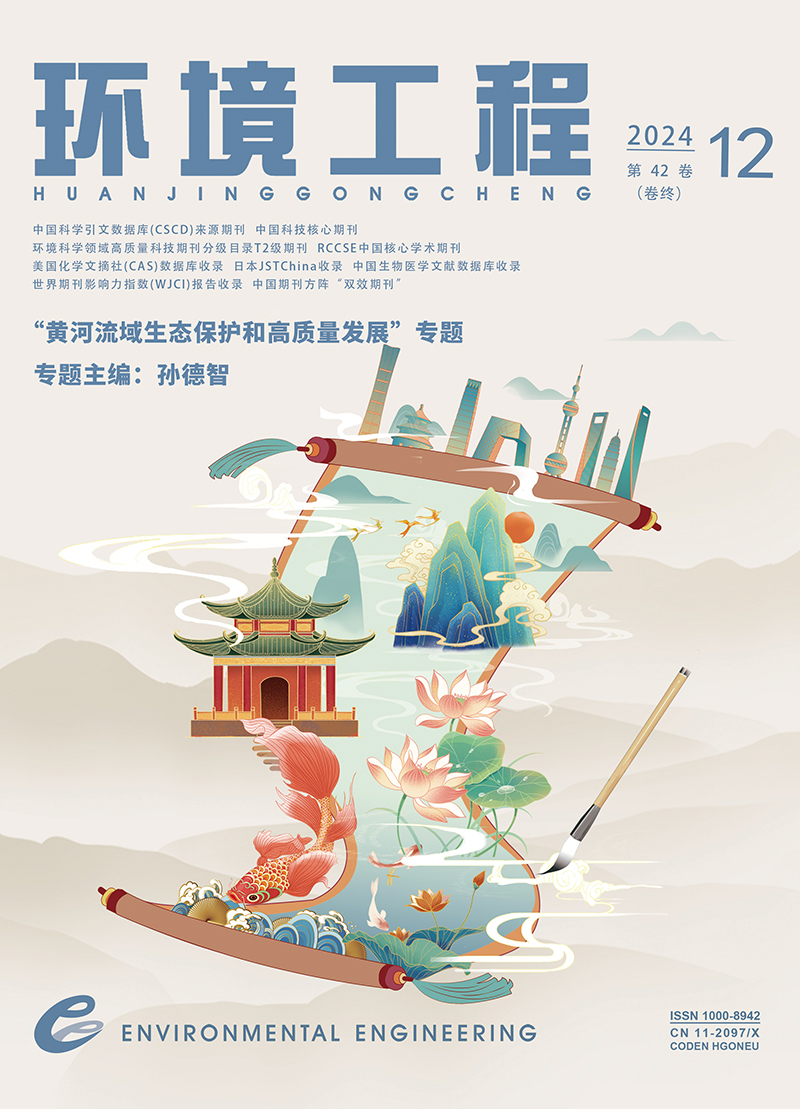| [1] |
BRIGHT D A, HEALEY N. Contaminant risks from biosolids land application: contemporary organic contaminant levels in digested sewage sludge from five treatment plants in Greater Vancouver, British Columbia[J]. Environ Pollut, 2003, 126(1): 39-49.
|
| [2] |
FANG J, ZHAN L, OK Y S, et al. Minireview of potential applications of hydrochar derived from hydrothermal carbonization of biomass[J]. Journal of Industrial and Engineering Chemistry, 2018, 57: 15-21.
|
| [3] |
CHA J S, PARK S H, JUNG S C, et al. Production and utilization of biochar: a review[J]. Journal of Industrial and Engineering Chemistry, 2016, 40: 1-15.
|
| [4] |
SAETEA P, TIPPAYAWONG N. Characterization of adsorbent from hydrothermally carbonized and steam activated sewage sludge[C]//Proceedings of the World Congress on Engineering, 2013: 3-5.
|
| [5] |
SPATARU A, JAIN R, CHUNG J W, et al. Enhanced adsorption of orthophosphate and copper onto hydrochar derived from sewage sludge by KOH activation[J]. RSC Advances, 2016, 6(104): 101827-101834.
|
| [6] |
FORNES F, BELDA R M, FERNANDEZ De CORDOVA P, et al. Assessment of biochar and hydrochar as minor to major constituents of growing media for containerized tomato production[J]. J Sci Food Agric, 2017, 97(11): 3675-3684.
|
| [7] |
WANG T F, ZHAI Y B, ZHU Y, et al. A review of the hydrothermal carbonization of biomass waste for hydrochar formation: process conditions, fundamentals, and physicochemical properties[J]. Renewable and Sustainable Energy Reviews, 2018, 90: 223-247.
|
| [8] |
ROMÁN S, LIBRA J, BERGE N, et al. Hydrothermal carbonization: modeling, final properties design and applications: a review[J]. Energies, 2018, 11(1):216.
|
| [9] |
XU Z X, SHAN Y Q, ZHANG Z, et al. Hydrothermal carbonization of sewage sludge: effect of inorganic salts on hydrochar’s physicochemical properties[J]. Green Chemistry, 2020, 22(20): 7010-7022.
|
| [10] |
LIU X M, ZHAI Y B, LI S H, et al. Hydrothermal carbonization of sewage sludge: effect of feed-water pH on hydrochar’s physicochemical properties, organic component and thermal behavior[J]. Bioresource Technology, 2020, 388: 122084.
|
| [11] |
XU X W, JIANG E N. Treatment of urban sludge by hydrothermal carbonization[J]. Bioresource Technology, 2017, 238: 182-187.
|
| [12] |
DANSO-BOATENG E, MOHAMMED A S, SANDER G, et al. Production and characterisation of adsorbents synthesised by hydrothermal carbonisation of biomass wastes[J]. SN Applied Sciences, 2021, 3(2):257.
|
| [13] |
MARTINS A E, PEREIRA M S, JORGETTO A O, et al. The reactive surface of Castor leaf [Ricinus communis L.] powder as a green adsorbent for the removal of heavy metals from natural river water[J]. J HAZARD MATER, 2013, 276: 24-30.
|
| [14] |
WANG Y, ZHANG Y, LI S Y, et al. Enhanced methylene blue adsorption onto activated reed-derived biochar by tannic acid[J]. Journal of Molecular Liquids, 2018, 268: 658-666.
|
| [15] |
YANG G X, JIANG H. Amino modification of biochar for enhanced adsorption of copper ions from synthetic wastewater[J]. Water Research, 2014, 48: 396-405.
|
| [16] |
HU L H, YANG Z P, CUI L M, et al. Fabrication of hyperbranched polyamine functionalized graphene for high-efficiency removal of Pb(Ⅱ) and methylene blue[J]. Chemical Engineering Journal, 2016, 287: 545-556.
|
| [17] |
LI L, HUANG S Y, WEN T, et al. Fabrication of carboxyl and amino functionalized carbonaceous microspheres and their enhanced adsorption behaviors of U (Ⅵ)[J]. Journal of Colloid and Interface Science, 2019, 543: 225-236.
|
| [18] |
CHEN Z Y, JING Y M, WANG Y, et al. Enhanced removal of aqueous Cd (Ⅱ) by a biochar derived from salt-sealing pyrolysis coupled with NaOH treatment[J]. Applied Surface Science, 2020, 511: 145619.
|
| [19] |
陈以頔. 污泥生物炭制备及对水中污染物去除的性能与机理[D]. 哈尔滨:哈尔滨工业大学, 2019.
|
| [20] |
JIAN M, GAO K, YU H. Effects of different pyrolysis temperatures on the preparation and characteristics of bio-char from rice straw[J]. Acta entiae Circumstantiae, 2016, 36(5): 1757-1765.
|


 Login
Login Register
Register E-alert
E-alert






 DownLoad:
DownLoad: